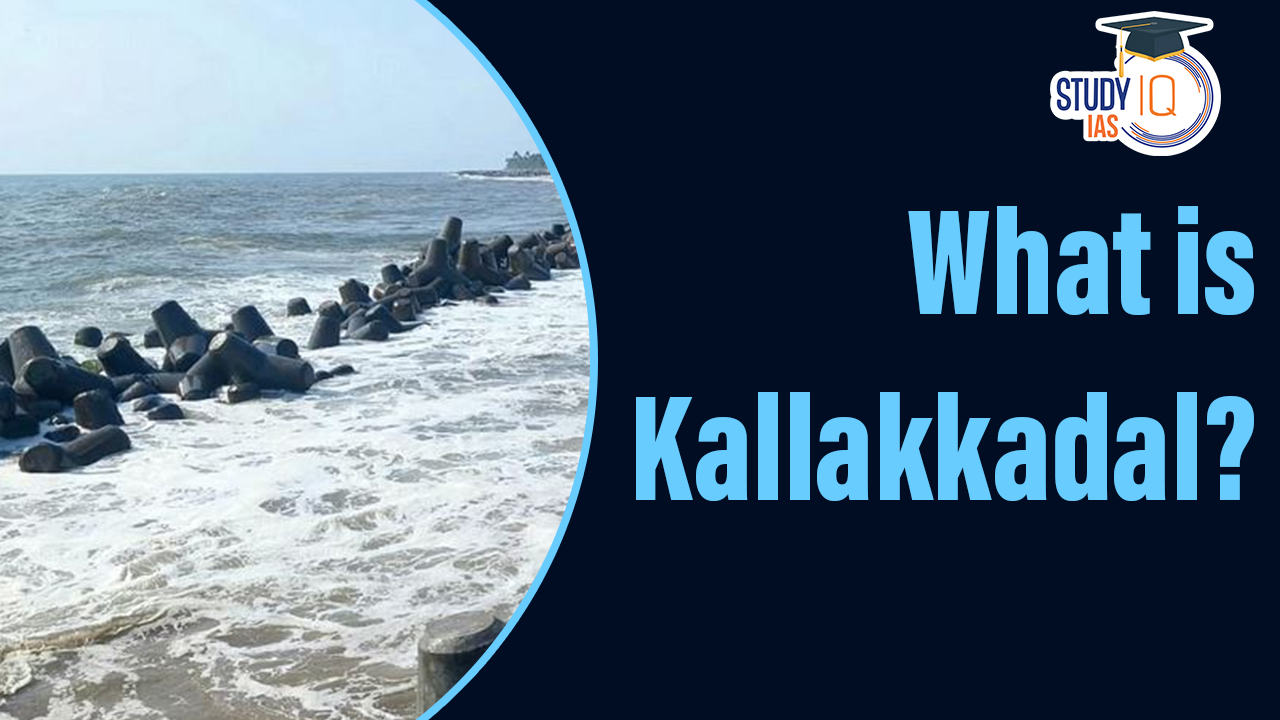Table of Contents
Context
- Recently, Kerala, India, experienced coastal flooding known as Kallakkadal, induced by remote oceanic storms.
- This instance, set off by a South Atlantic Ocean low-pressure area, led to the inundation of numerous homes across the districts of Alappuzha, Kollam, and Thiruvananthapuram.
What is Kallakkadal?
- Kallakkadal is a type of coastal flooding unique to the pre-monsoon period (April-May) on India’s southwest coast, characterised by swell waves.
- The term, approved by UNESCO in 2012, combines the Malayalam words for ‘thief’ (Kallan) and ‘sea’ (Kadal), symbolising the sea’s sudden and unexpected encroachment.
Cause and Mechanism of Kallakkadal
- Triggered by distant ocean storms, Kallakkadal results from swell waves generated by strong winds or storms in the ocean, far from the local area.
- Specifically, the phenomenon is often due to strong winds in the southern Indian Ocean, with the latest event prompted by a low-pressure system from the South Atlantic Ocean, creating swell waves up to 11 metres high.
Recent Events
- Recent flooding affected hundreds of houses in Kerala’s Alappuzha, Kollam, and Thiruvananthapuram districts, following a low atmospheric pressure system around March 25, originating 10,000 kilometres away.
- Waves began impacting Kerala and Lakshadweep, with the swell surge forecasted to continue affecting the western coast for two more days before diminishing.
Warning Systems and Measures
- The Swell Surge Forecast System, introduced by the Indian National Centre for Ocean Information Services (INCOIS) in 2020, enables seven-day advance warnings, aiding in the preparation and mitigation against Kallakkadal.
- However, predicting Kallakkadal poses difficulties due to its sudden onset without prior signs or local wind movements.
- In these cases, the indigenous knowledge of fishermen and coastal dwellers becomes invaluable for recognizing and reacting to such phenomena.
Distinction Between Tsunami and Kallakkadal
| Characteristic | Tsunami | Kallakkadal |
| Definition | Tsunamis are large waves triggered by underwater disturbances such as earthquakes. | Kallakkadal refers to coastal flooding in the pre-monsoon season due to swell waves on India’s southwest coast. |
| Wave Height | Heights can exceed 30 metres. | Waves usually range between 2 and 6 metres in height. |
| Wave Speed | Speeds can reach up to 800 km/h. | Waves move at speeds up to 50 km/h. |
| Cause | Caused by the sudden movement of water due to seismic events or landslides. | Generated by distant oceanic storms transferring energy to the sea surface. |
| Terminology | “Tsunami” comes from Japanese, meaning “harbour wave.” | “Kallakkadal” merges the Malayalam words for “thief” (Kallan) and “sea” (Kadal), recognized officially by UNESCO in 2012. |
Forecast and Precautions of Kallakkadal
- The swell surge is expected to move towards the Tamil Nadu coast, with high waves anticipated on Tuesday night.
- INCOIS has issued warnings for coastal areas prone to sea erosion, advising precautionary measures and the safeguarding of fishing vessels.


 Dalai Lama Confirms He will have a Succe...
Dalai Lama Confirms He will have a Succe...
 Transforming Remittances Landscape in In...
Transforming Remittances Landscape in In...
 Iron Ore, Types, Uses, Distribution in I...
Iron Ore, Types, Uses, Distribution in I...





















